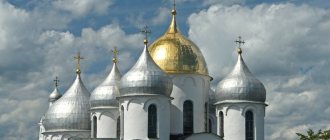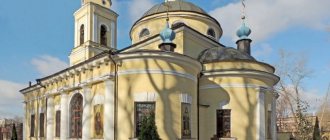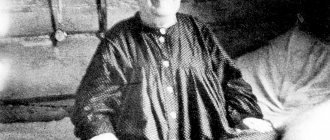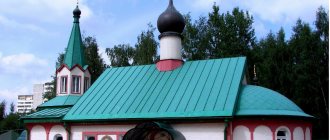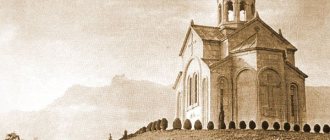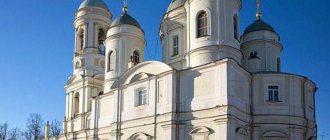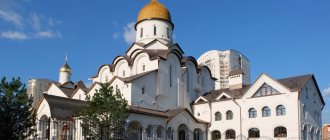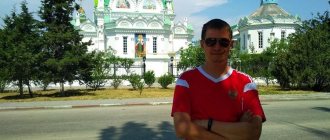Story:
In 532, during the uprising, the main temple of Constantinople burned down. 40 days after the suppression of the rebellion, Emperor Justinian began construction of the St. Sophia Cathedral, which was supposed to show the power of the Byzantine Empire and strengthen his position on the throne. After 5 years and 10 months, the cathedral was solemnly consecrated by Patriarch Mina of Constantinople. Until the 15th century, St. Sophia Cathedral remained the main temple not only of the Byzantine Empire, but of the entire Christian world. In 1453, the Turks captured Constantinople, the city was renamed Istanbul and the temple was turned into a mosque, and in 1934 the St. Sophia Cathedral became a museum and services are no longer held there. But the situation can change at any moment: there is a decision to return Hagia Sophia to the status of a mosque.
How to find Hagia Sophia (download map):
Address: Sultan Ahmet Mahallesi, Ayasofya Meydanı, 34122 Fatih/İstanbul, Türkiye
LiveInternetLiveInternet
Sophia of Kiev, Sophia of Novgorod, Sophia of Polotsk - large stone cathedrals grew up in less than thirty years (1037 - 1066) on the lands of largely pagan and mostly one-story wooden Rus'. In the next four hundred (or even five hundred and fifty) years, not a single St. Sophia Cathedral was built. And the Kiev, Novgorod and Polotsk churches will become centers of religious, social and political life.
To follow the wise word of Solomon and, by imitating, to desire to surpass him - this kind of feeling overwhelmed the Byzantine emperors, who “ordered” temples in honor of the Wisdom of God. Similar feelings possessed Yaroslav the Wise, who wished to build Sofia in Kyiv, and then in Novgorod.
“So, rulers of nations, if you delight in thrones and sceptres, then honor wisdom, so that you may reign forever... A multitude of wise men is the salvation of the world, and a wise king is the well-being of the people,” says the Book of the Wisdom of Solomon. Solomon calls Her “the artist of all things,” “the breath of the power of God and the pure outpouring of the glory of the Almighty,” “the image of His goodness.” In the context of the doctrine of the Trinity and the biblical texts in which Sophia is mentioned, Her existence seems logically unfounded, excessive, unnecessary: in some places she comes close to the Holy Spirit and the Talmudic Ruach HaKodesh, in others - with God the Son and the ancient Logos. Her meaning is unclear, as are the reasons for Her existence and Her relationship to the Trinity. This ambiguity led to ideological confrontation: adherents of Arianism compared Sophia with the Holy Spirit, Orthodox Christians - with Jesus Christ and the Mother of God.
The first of the churches of Sophia - Constantinople - was dedicated specifically to the Holy Spirit: Emperor Constantius II, during whose reign the dedication and consecration of the cathedral took place, was an Arian, and Justinian, who built the modern majestic temple, sympathized with the Monophysites. By the time of the adoption of Christianity in Rus', Sophia was associated with Christ and the Virgin Mary.
Sofia Kyiv
Since the first Kiev church, the Tithes, was dedicated to the Mother of God, the second, which was to become the main state church, was to be dedicated to Christ.
But in Rus', wisdom was also understood as the fruit of learning. Apparently, Yaroslav sought to achieve Solomonic wisdom in a practical way, founding churches and book centers.
The foundation of the Church of Sophia also had a state significance. In 1037, the year in which the construction of the cathedral is dated in the Tale of Bygone Years, Yaroslav moved from Novgorod to Kyiv - although he had occupied the Kiev table for many years. The reason for the move was the death of the Chernigov prince Mstislav, whom Yaroslav feared. Having become the sovereign ruler of Kievan Rus (only the Principality of Polotsk was not dependent on Kyiv), Yaroslav had to elevate Kyiv among other cities, and elevate his state above its neighbors. And if Justinian, who spent three annual budgets of Byzantium on the construction of the cathedral, exclaimed: “Solomon, I have surpassed you!”, then Yaroslav, inviting architects from Byzantium, sought to surpass Justinian.
In five years, a team of craftsmen built a thirteen-domed, five-nave cross-domed church. The length of its galleries reached 55 meters, and the height to the crown of the main dome was almost 30 meters. The temple was decorated with colorful mosaics and frescoes. At the zenith of the dome there was a mosaic of Christ Pantocrator, on the central altar apse - Our Lady of Oranta. The convergence of the images of Sophia and Mary is associated with the Kyiv Cathedral.
Sofia Novgorodskaya
After the consecration of the Kyiv Cathedral, Byzantine craftsmen went to Veliky Novgorod - the second city of the country, in which, according to some sources, the wooden Church of Sophia was erected back in 989 (there is an opinion that Princess Olga founded the wooden Sophia Church in Kiev in 960 year). It burned down and a cathedral was built in its place on the territory of Detinets.
On September 14, 1052, the Novgorod Cathedral was consecrated, and 20 days later, Yaroslav’s son Vladimir, Prince of Novgorod, died and was buried in the rebuilt temple.
St. Sophia Cathedral became not only a religious center, but also the very soul of the city, connecting its five opposing ends.
In the iconographic tradition, Sophia is depicted as the Mother of God, standing in a house or temple and stretching out her hands to the sky. On her breasts rests the blessing Eternal Child. But the first of the icons of the Wisdom of God was painted in the 16th century in Novgorod and became the subject of heated debate. They even wanted to ban it, but the icon turned out to be miraculous. It depicts a Fiery Angel sitting on a golden throne, flanked by the Mother of God and John the Baptist.
Sofia Polotskaya
The Novgorod and Kiev churches have changed significantly over a thousand years: one suffered from mediocre restorations of the 19th century and shelling during the Patriotic War, the other was “dressed up” in green pear-shaped Ukrainian baroque. But in comparison with Sofia of Polotsk, they are in good condition. The oldest main temple of the Principality of Polotsk on Belarusian soil suffered in the Russian-Swedish war. A powder magazine exploded underneath him, leaving no stone unturned. The cathedral was rebuilt in the Vilna Baroque style.
While the Polotsk prince Vseslav was at war with Kiev and Novgorod, the architects were erecting the third Sophia. For Yaroslav and his son, the construction of a multi-domed stone cathedral was a matter of not only politics, but also religion, and Vseslav, known as a sorcerer and a double-believer, was guided only by political motives. By building the Cathedral of the Wisdom of God, he demonstrated the equality of Polotsk with its competitors: trade - Novgorod and administrative - Kyiv.
In 1066, Vseslav even made a campaign against Novgorod; on his orders, the bells were removed from Novgorod Sofia and taken to Polotsk.
Cyrillic alphabet
Architectural features of the cathedral:
Above the altar there is a mosaic depicting the Virgin Mary enthroned, in whose hands is the infant Christ. This is the first figurative mosaic created in the 9th century after the period of iconoclasm.
To lighten the dome, they used bricks made of white spongy clay, which was mined on the island of Rhodes. This brick weighed 12 times lighter than usual.
The pressure of the dome (1) is dissipated by the half-domes (2) , which, in turn, rest on the “quarters” (3) . Thus, the load is evenly distributed over the entire structure. Due to the absence of columns directly under the dome, the space visually increases in size and the dome seems to “float” in the air.
In the courtyard of the temple stood a quadriga of bronze horses by the sculptor Lysippos (approximately 4th century BC). Initially it was in Corinth, but then it was transported to Rome, and from there to Constantinople. In 1204, the temple was plundered by the crusaders and took the sculpture with them. It was installed on the facade of St. Mark's Cathedral in Venice. Now in their place there are exact copies; the original is in the cathedral museum. The exact composition of the alloy from which the sculpture is cast remains unknown.
The fresco of Emperor Leo VI (816–912) is located above the Royal Doors, the entrance to the temple used only by the emperor. Jesus Christ is depicted in the center, with Emperor Leo VI kneeling at the bottom left. This is an uncharacteristic image for the ruler of the Byzantine Empire. Researchers suggest that it is connected with the fourth non-canonical marriage of the emperor, after which the patriarch refused to marry him and did not allow him into the temple.
Eight porphyry columns (dark red) taken from the Temple of the Sun were brought to the Church of St. Sophia from Rome. Eight columns of green marble were brought from Ephesus, which previously stood in the Temple of Artemis. There is an assumption that the story of the columns is a later legend.
Current state[edit]
Interior decoration of the temple
The design of the temple is quite simple. Initially, in the 6th century, it was a three-nave basilica with three domes. What was unusual for that time, the domes were already sloping and flat. In plan, the building looked like a cross. Unfortunately, the original mosaic tiles on the floor have hardly survived, as has the church decoration. Ancient burials in the crypt and chapel were also looted. But during the restoration of the cathedral, which was carried out in the 1990s, ancient Roman catacombs were discovered on its territory. Today on the territory of the temple you can see a monument to Boris III and the tomb of the unknown soldier with the Eternal Flame and a stone statue of a lion.
Near the church there is a small park, in the middle of which there is a monument to the doctor. It is dedicated to Russian military doctors and medical workers who died during the Russian-Turkish War.
Interesting Facts
1) What did Emperor Justinian say when he entered the completed Hagia Sophia?
Click to flip
2) Why were pipes from city fountains required during the construction of the temple?
Click to flip
3) What is the connection between the Church of Hagia Sophia and Kiev, Veliky Novgorod and Polotsk?
Click to flip
4) What great shrines were in the temple?
Click to flip
5) What is the “Navel of the Earth”?
Click to flip
6) What does the Church of Hagia Sophia have to do with the Baptism of Prince Vladimir?
Click to flip
7) How are the relics of saints kept in the Church of Hagia Sophia?
Click to flip
Working hours
The museum is open:
- from April 15 to October 25 from 9.00 to 19.00, ticket offices and entrance to the museum close at 18.00;
- from October 25 to April 15 from 9.00 to 17.00, ticket offices and entrance to the museum close at 16.00.
Keep in mind that there is almost always a queue for at least 15 minutes to get into the museum; during the tourist season you can wait for an hour. Calculate your time, do not put off your visit until the evening.
Also keep in mind that:
- from May 2021 the museum is closed on Mondays;
- You will not be able to visit the museum on the first day of Ramadan and during the Sacrifice Festivals.
